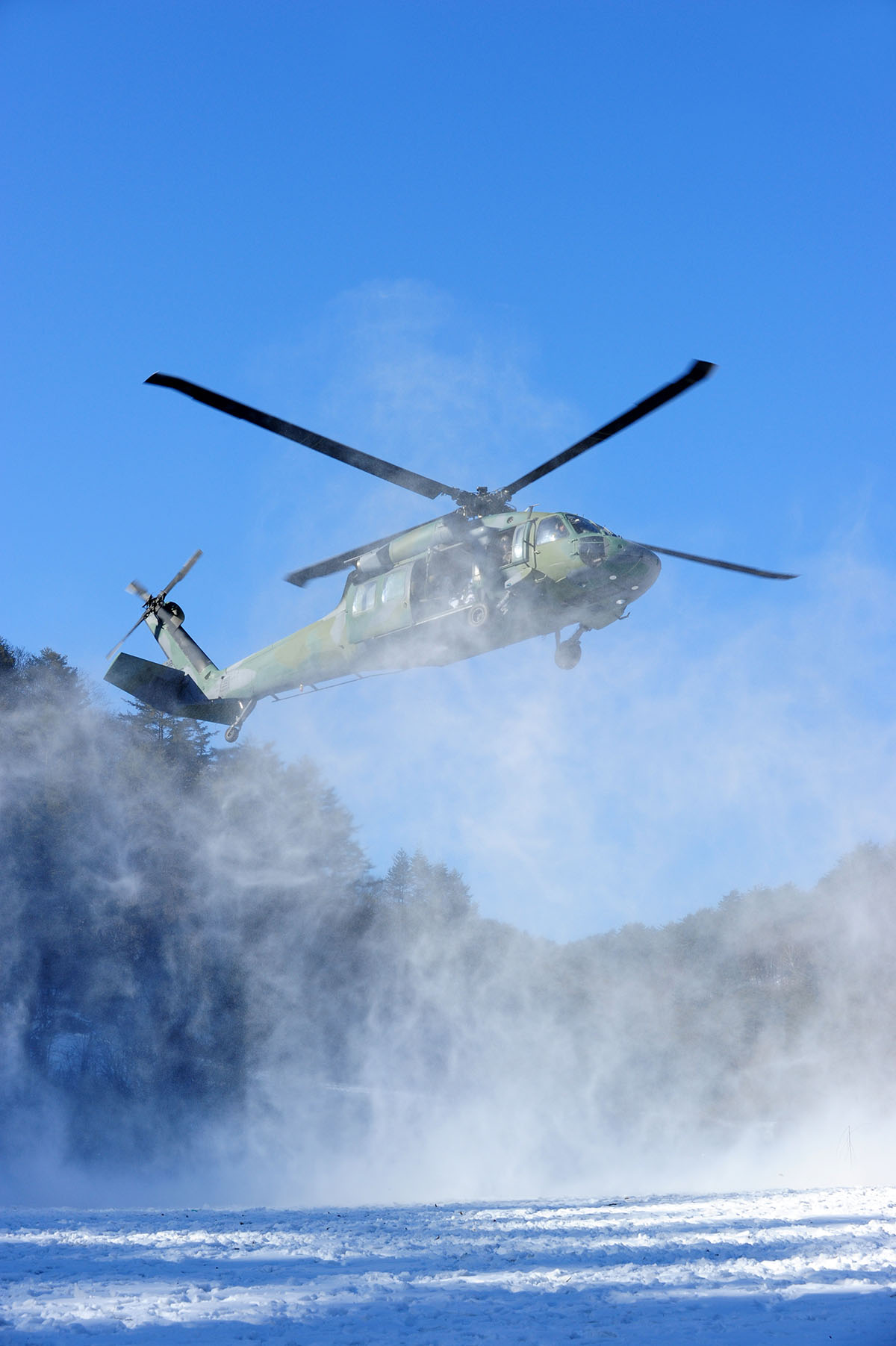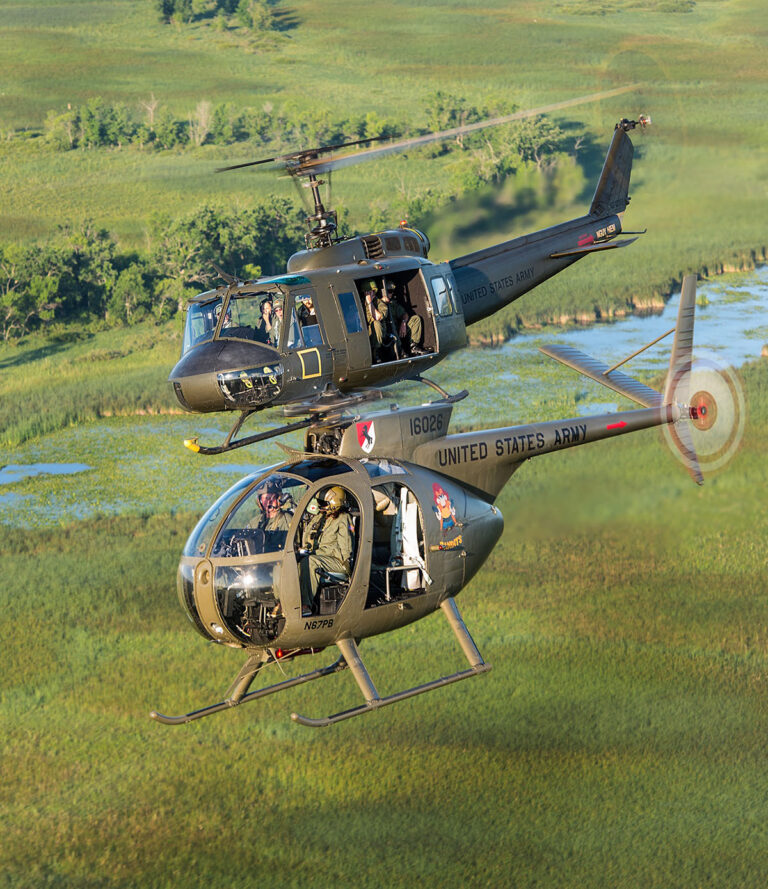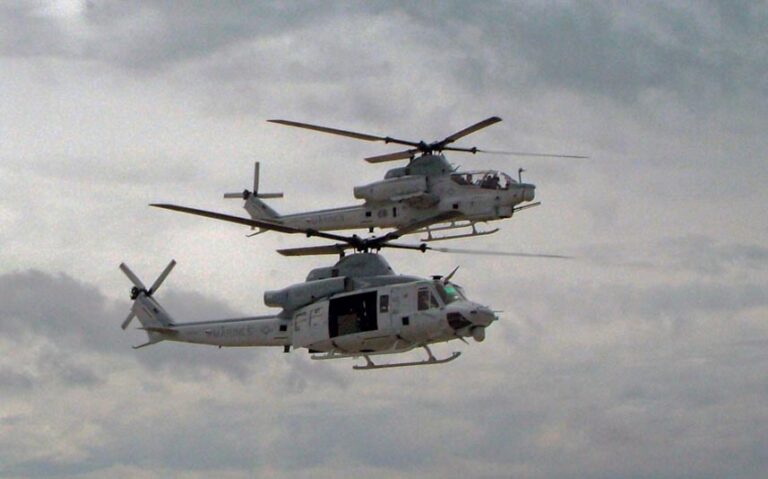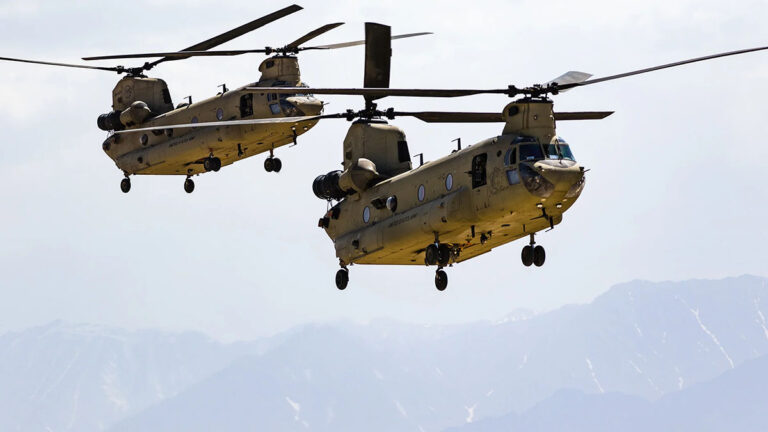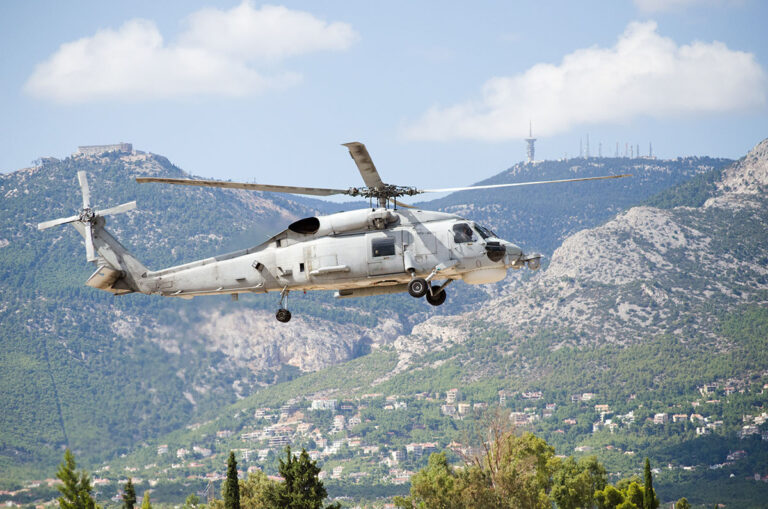Unlocking the Legacy: Exploring the Sikorsky UH-60 Black Hawk
Welcome to an exciting journey through the world of aviation, where we unveil the remarkable story of the Sikorsky UH-60 Black Hawk, a helicopter that has transcended its role as a mere aircraft to become an enduring icon of strength, versatility, and cultural significance.
In this in-depth exploration, we will delve deep into the heart of the Black Hawk’s legacy, unraveling its captivating history, design, operational prowess, and the indelible mark it has left on popular culture. Whether you are an aviation enthusiast, a history buff, or simply curious about the incredible machines that fill our skies, this article promises to be an informative and engaging read.
Here’s a sneak peek at what lies ahead in this article:
Historical Origins
We’ll kick things off by delving into the origins of the Sikorsky UH-60 Black Hawk, tracing its roots back to its visionary creator and the pivotal moments that led to its development.
Design and Specifications
Discover the inner workings of this iconic helicopter, from its powerful engines to its advanced avionics, as we break down its design and technical specifications.
Variants and Configurations
Explore the diverse roles the Black Hawk plays in military and civilian operations, including its various configurations tailored to meet specific mission requirements.
Technology and Innovations
Uncover the cutting-edge technologies that have made the Black Hawk a force to be reckoned with in modern aviation, from safety features to advanced avionics.
Operational History
Embark on a historical journey through the Black Hawk’s operational history, from its combat debut in Grenada to its vital role in peacekeeping and humanitarian missions worldwide.
Notable Users
Meet the organizations and nations that have embraced the Black Hawk for its reliability and versatility, spanning military, law enforcement, medical evacuation services, firefighting agencies, and more.
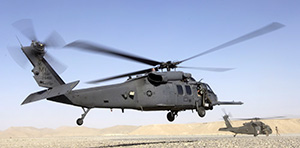
Safety and Reliability
Dive into the safety features and reliability that have earned the Black Hawk its reputation as a trusted choice for critical missions.
Comparison with Competing Helicopters
We’ll conduct a comparative analysis, pitting the Black Hawk against its competitors, and highlight what sets it apart in the world of rotorcraft.
Future Developments
Look into the crystal ball of aviation as we explore potential future developments and innovations that could shape the Black Hawk’s journey ahead.
Cultural Impact
Finally, we’ll examine the Black Hawk’s cultural significance, from its presence in film and literature to its role as a symbol of service and sacrifice.
Join us as we unlock the legacy of the Sikorsky UH-60 Black Hawk, a helicopter that has not only soared through the skies but also captured the imagination of people worldwide. Whether you’re a seasoned aviation expert or a curious newcomer, this article promises to be a captivating ride through the world of one of aviation’s most iconic symbols.
Let’s embark on this adventure and discover the extraordinary world of the Black Hawk together.
History of the Sikorsky UH-60 Black Hawk
The Sikorsky UH-60 Black Hawk, often simply referred to as the Black Hawk, stands as a paragon of military helicopter excellence. Its remarkable history is marked by technological innovations, battlefield heroics, and versatility. In this section, we’ll delve into the captivating journey of the Sikorsky UH-60 Black Hawk, tracing its origins and key milestones.
Origins and Development
The story of the Black Hawk begins in the late 1970s when the United States Army recognized the need for a new utility tactical transport helicopter to replace the aging UH-1 Iroquois (Huey). Sikorsky Aircraft Corporation, led by visionary engineer Igor Sikorsky, embarked on the task of designing this revolutionary helicopter.
The prototype, designated as the YUH-60A, took its maiden flight in 1974. The helicopter showcased significant advancements in technology and design, including a more powerful engine, advanced avionics, and enhanced troop-carrying capacity. These improvements set the stage for its future success.
An Illustrated History of Military Helicopters
A complete history of Army and Navy helicopters from the first visionaries to unmanned aircraft systems. This book, with over 200 helicopter photographs documents every generation of rotorcraft from early prototypes to the specialist helicopters of today.
Amazing text. As a Veteran helicopter mechanic I am passionate about all birds and their histories. Highly recommend this book. It sits firmly on my coffee table to spread the allure to friends and visitors alike. – John J.
Key Milestones
1980s: Entry into Service
In 1979, the U.S. Army selected the YUH-60A as the winner of the Utility Tactical Transport Aircraft System (UTTAS) competition, leading to the production of the UH-60A Black Hawk. This marked the beginning of its military service, and it was formally introduced in the early 1980s.
Operation Urgent Fury (1983)
The Black Hawk’s baptism by fire occurred during Operation Urgent Fury in Grenada in 1983. It demonstrated its capabilities in combat, including troop transport, medical evacuation, and aerial fire support, earning its reputation as a versatile workhorse.
Operation Just Cause (1989)
The UH-60 Black Hawk played a pivotal role in Operation Just Cause in Panama in 1989, solidifying its position as an indispensable asset for special operations and urban warfare.
Desert Storm (1990-1991)
During the Gulf War, the Black Hawk helicopters were instrumental in various missions, including troop transport, medical evacuation, and reconnaissance. Their adaptability in harsh desert conditions showcased their resilience.
Peacekeeping and Humanitarian Missions
Beyond combat, the Black Hawk has been actively involved in peacekeeping efforts, disaster relief operations, and humanitarian missions worldwide. Its versatility extends to civilian applications, including search and rescue, firefighting, and law enforcement support.
Modernization and Variants
Over the years, the Black Hawk has undergone several modernization programs, resulting in various upgraded versions and variants tailored to specific mission requirements. Notable variants include the UH-60L, UH-60M, and the specialized MH-60 Black Hawk.
Legacy and Future Prospects
The Sikorsky UH-60 Black Hawk’s legacy as an iconic military helicopter is well-established. Its reliability, adaptability, and continuous evolution make it a mainstay in military and civilian operations worldwide. With ongoing upgrades and innovations, the Black Hawk continues to serve as a testament to the enduring spirit of aviation excellence.
In conclusion, the history of the Sikorsky UH-60 Black Hawk is a saga of innovation and versatility. From its early days as a prototype to its vital role in contemporary military operations and humanitarian efforts, this remarkable helicopter has left an indelible mark in the world of aviation.
Stay tuned for more in-depth explorations of the Sikorsky UH-60 Black Hawk’s design, performance, and contributions in our series of articles about this iconic helicopter.
Design and Specifications of the Sikorsky UH-60 Black Hawk
Understanding the design and specifications of the Sikorsky UH-60 Black Hawk helicopter is crucial to appreciate its remarkable capabilities. In this section, we’ll dissect the physical characteristics and performance metrics that make this helicopter a standout in its class.
Physical Characteristics
Sikorsky UH-60 Black Hawk Size and Dimensions
The Black Hawk’s robust design incorporates impressive dimensions. Standing at approximately 16.7 feet (5.1 meters) in height and 64.8 feet (19.8 meters) in length with its rotors spinning, this helicopter commands attention on the tarmac. Its rotor diameter measures 53.7 feet (16.4 meters), allowing for exceptional lift capabilities.
Weight and Capacity
With an empty weight of around 11,000 pounds (4,990 kilograms) and a maximum takeoff weight of approximately 22,000 pounds (10,000 kilograms), the Black Hawk has the muscle to carry substantial payloads. It boasts an internal cabin that can accommodate up to 11 fully-equipped troops or 6 stretchers for medical evacuation missions.
Distinctive Features
The Black Hawk’s design incorporates various distinctive features, including its four-bladed main rotor system and tail rotor. These elements not only provide stability and control but also contribute to its recognizable silhouette.

Performance
Speed and Range
The UH-60 Black Hawk is no slouch when it comes to speed. It can cruise at speeds of up to 159 miles per hour (256 kilometers per hour), making it one of the swiftest helicopters in its category. In terms of range, it can cover approximately 320 nautical miles (593 kilometers) on a single tank of fuel.
Endurance and Altitude
This helicopter boasts impressive endurance, capable of staying airborne for up to 2.5 hours, depending on the mission profile and payload. It can also reach altitudes of over 19,000 feet (5,791 meters), making it adaptable to various operational environments.
Versatility
One of the key design principles behind the Black Hawk is its versatility. It can be configured for a wide range of missions, including troop transport, medical evacuation, search and rescue, and aerial firefighting. Its adaptability has made it a favorite among military and civilian operators alike.
Notable Variants and Configurations
To meet specific mission requirements, the Sikorsky UH-60 Black Hawk has seen the development of several variants and configurations. These variations include specialized models like the MH-60 Black Hawk for special operations and the UH-60M for enhanced performance and modern avionics.
Table: Notable Sikorsky UH-60 Black Hawk Variants
| Variant | Role | Notable Features |
| UH-60A Black Hawk | Utility Transport | Entry into service in the early 1980s. |
| UH-60L Black Hawk | Upgraded Utility Transport | Enhanced payload capacity and avionics. |
| UH-60M Black Hawk | Modernized Utility Transport | Improved performance and digital cockpit. |
| MH-60 Black Hawk | Special Operations | Modified for special forces operations. |
| HH-60 Black Hawk | Combat Search and Rescue (CSAR) | Equipped for medical evacuation missions. |
| UH-60V Black Hawk | Upgrade Package | Retrofitting older UH-60s with modern avionics. |
Conclusion
The design and specifications of the Sikorsky UH-60 Black Hawk underscore its prowess as a versatile, high-performance helicopter. Its impressive size, weight capacity, speed, and adaptability have made it a linchpin in both military and civilian operations. Stay tuned for more in-depth explorations of this remarkable helicopter’s capabilities and applications.
Black Hawk Down: A Story of Modern War
On October 3, 1993, about a hundred elite U.S. soldiers were dropped by helicopter into the teeming market in the heart of Mogadishu, Somalia. Their mission was to abduct two top lieutenants of a Somali warlord and return to base. It was supposed to take an hour. Instead, they found themselves pinned down through a long and terrible night fighting against thousands of heavily-armed Somalis. The following morning, eighteen Americans were dead and more than seventy had been badly wounded..
Variants and Configurations of the Sikorsky UH-60 Black Hawk
The versatility of the Sikorsky UH-60 Black Hawk extends beyond its standard configuration. With specialized variants and configurations tailored for specific missions, this helicopter has become a true chameleon of the skies. In this section, we’ll delve into the notable variants and their unique roles.
UH-60A Black Hawk
Role: Utility Transport
The UH-60A Black Hawk was the pioneering model that introduced the world to this iconic helicopter. It entered service in the early 1980s and set the stage for the Black Hawk’s illustrious career. Known for its troop transport capabilities, the UH-60A became the cornerstone of military operations, carrying soldiers, equipment, and supplies to the front lines.
UH-60L Black Hawk
Role: Upgraded Utility Transport
Building on the success of the UH-60A, the UH-60L Black Hawk introduced a range of enhancements. It boasted improved payload capacity and avionics, making it even more versatile for a variety of missions. With its upgraded capabilities, it became a workhorse in various military operations.
UH-60M Black Hawk
Role: Modernized Utility Transport
The UH-60M Black Hawk represents a leap forward in terms of performance and technology. Equipped with a digital cockpit and advanced avionics, it offers superior situational awareness and operational efficiency. This modernized version ensures that the Black Hawk remains at the forefront of helicopter technology.
MH-60 Black Hawk
Role: Special Operations
The MH-60 Black Hawk is a specialized variant tailored for special forces operations. It features modifications such as terrain-following radar, forward-looking infrared (FLIR), and other mission-specific equipment. This variant is integral to special operations, including combat search and rescue (CSAR) and covert insertions.
HH-60 Black Hawk
Role: Combat Search and Rescue (CSAR)
When lives are on the line, the HH-60 Black Hawk shines as a dedicated combat search and rescue helicopter. It is equipped with medical equipment and hoist systems for casualty evacuation. This variant plays a critical role in retrieving injured personnel from the battlefield.
UH-60V Black Hawk
Role: Upgrade Package
To extend the lifespan and capabilities of existing UH-60 Black Hawks, the UH-60V upgrade package was introduced. This retrofitting program equips older models with modern avionics, ensuring they remain relevant and effective in contemporary operations.
Table: Notable Sikorsky UH-60 Black Hawk Variants
| Variant | Role | Notable Features |
| UH-60A Black Hawk | Utility Transport | Entry into service in the early 1980s. |
| UH-60L Black Hawk | Upgraded Utility Transport | Enhanced payload capacity and avionics. |
| UH-60M Black Hawk | Modernized Utility Transport | Improved performance and digital cockpit. |
| MH-60 Black Hawk | Special Operations | Modified for special forces operations. |
| HH-60 Black Hawk | Combat Search and Rescue (CSAR) | Equipped for medical evacuation missions. |
| UH-60V Black Hawk | Upgrade Package | Retrofitting older UH-60s with modern avionics. |
Conclusion
The Sikorsky UH-60 Black Hawk’s adaptability is exemplified by its range of variants and configurations. From the standard UH-60A to specialized models like the MH-60 and HH-60, each variant serves a unique purpose, making it a versatile asset for military and civilian operations alike.
Stay tuned as we continue to explore the world of the Sikorsky UH-60 Black Hawk, uncovering its various roles, technological advancements, and enduring legacy.
Technology and Innovations in the Sikorsky UH-60 Black Hawk
The Sikorsky UH-60 Black Hawk is a shining example of how advancements in technology can transform a helicopter into a multi-purpose powerhouse. In this section, we’ll uncover the cutting-edge innovations that have propelled the Black Hawk into the forefront of military and civilian aviation.
Advanced Avionics
One of the most significant technological leaps in the UH-60 Black Hawk’s evolution is its advanced avionics suite. The modernized UH-60M model, for example, boasts a glass cockpit with digital displays, reducing the workload on the crew and enhancing situational awareness. These sophisticated systems provide real-time data on navigation, communication, and mission parameters.
Fly-by-Wire Control System
The incorporation of a fly-by-wire control system has revolutionized the Black Hawk’s maneuverability. This technology replaces traditional mechanical control systems with electronic interfaces, offering greater precision and stability during flight. Pilots can operate the helicopter with ease, even in challenging conditions.
Terrain-Following Radar (TFR)
For low-level flight operations, the addition of terrain-following radar is a game-changer. TFR allows the UH-60 Black Hawk to maintain a low altitude while navigating complex and varied terrain. This capability is crucial for missions like special operations and search and rescue.
Infrared Countermeasures
In the realm of self-defense, the Black Hawk incorporates infrared countermeasure systems. These technologies detect and disrupt infrared-guided threats such as heat-seeking missiles. They provide an added layer of protection for both the aircraft and its occupants in hostile environments.
Improved Engine Performance
Modern UH-60 Black Hawk variants benefit from upgraded engines that deliver enhanced performance and fuel efficiency. These powerplants provide the necessary thrust for the helicopter to achieve higher speeds, greater endurance, and improved mission flexibility.
Composite Rotor Blades
Incorporating composite rotor blades has reduced the overall weight of the Black Hawk while improving its durability and performance. These blades are resistant to corrosion and offer a longer lifespan compared to traditional metal blades.
Enhanced Payload Capacity
Through ongoing innovations, the UH-60 Black Hawk has seen its payload capacity increase significantly. This allows for the transport of more troops, supplies, or specialized equipment, making it an even more versatile platform.
Table: Key Technological Innovations in the Sikorsky UH-60 Black Hawk
| Technology | Role | Notable Features and Benefits |
| Advanced Avionics | Enhanced Situational Awareness | Real-time data on navigation and mission parameters. |
| Fly-by-Wire Control System | Improved Maneuverability | Precision control and stability during flight. |
| Terrain-Following Radar (TFR) | Low-Level Flight Operations | Navigation in complex and varied terrain. |
| Infrared Countermeasures | Self-Defense | Detection and disruption of infrared-guided threats. |
| Improved Engine Performance | Enhanced Power | Higher speeds, greater endurance, and fuel efficiency. |
| Composite Rotor Blades | Weight Reduction | Corrosion resistance and longer blade lifespan. |
| Enhanced Payload Capacity | Versatility | Transport of more troops, supplies, or equipment. |
Conclusion
The Sikorsky UH-60 Black Hawk’s technological innovations have elevated it to unparalleled heights in the world of helicopters. From advanced avionics to composite rotor blades, each innovation plays a crucial role in enhancing its performance, safety, and adaptability.
As we continue to explore the realm of the Black Hawk, we’ll uncover more about its operational history, its pivotal role in various missions, and its legacy in aviation.
Operational History of the Sikorsky UH-60 Black Hawk
The Sikorsky UH-60 Black Hawk helicopter has etched its name in the annals of military aviation history through its unwavering service in a multitude of operations. In this section, we’ll embark on a journey through time to uncover the pivotal moments and missions that define the Black Hawk’s operational history.
Operation Urgent Fury (1983)
The Black Hawk’s combat debut occurred during Operation Urgent Fury in Grenada in 1983. It played a vital role in swiftly transporting troops, evacuating casualties, and providing air support. The success of the Black Hawk in this operation highlighted its versatility and reliability in challenging combat situations.
Operation Just Cause (1989)
In 1989, the Black Hawk once again demonstrated its effectiveness, this time during Operation Just Cause in Panama. Its ability to perform urban warfare operations and provide rapid troop insertion and extraction made it indispensable. The operation showcased the helicopter’s adaptability in diverse combat scenarios.
Desert Storm (1990-1991)
The Gulf War marked a defining moment in the Black Hawk’s operational history. It was deployed extensively for troop transport, medical evacuation, and special operations missions. Its performance in the harsh desert environment underscored its durability and capability to operate in adverse conditions.
Peacekeeping and Humanitarian Missions
Beyond combat, the Black Hawk has been a stalwart in peacekeeping efforts and humanitarian missions. From Bosnia and Kosovo to Haiti and beyond, it has provided vital support, including medical evacuations, disaster relief, and humanitarian aid delivery.
Domestic Operations
The Black Hawk’s versatility extends to domestic operations as well. It has been a lifeline during natural disasters such as hurricanes, wildfires, and floods. Its ability to swiftly transport personnel and supplies to affected areas has saved countless lives in times of crisis.
Notable Users
Countries and organizations around the world have embraced the Sikorsky UH-60 Black Hawk for its capabilities. Notable users include the United States, where it serves in all branches of the military, as well as allied nations and civilian operators. Its widespread adoption speaks to its reputation and performance.
Conclusion
The operational history of the Sikorsky UH-60 Black Hawk is a testament to its adaptability, resilience, and enduring legacy. From the battlefields of Grenada to humanitarian missions across the globe, this helicopter has consistently proven its worth.
As we continue to explore the world of the Black Hawk, we’ll uncover more about its safety features, reliability, and ongoing contributions to aviation.
Notable Users of the Sikorsky UH-60 Black Hawk
The Sikorsky UH-60 Black Hawk helicopter has garnered a global reputation for its versatility, reliability, and operational prowess. In this section, we’ll introduce you to some of the notable users who have embraced the Black Hawk for various missions, both military and civilian.
United States Armed Forces
Variants Used: UH-60A, UH-60L, UH-60M, MH-60, HH-60
The United States Armed Forces have been at the forefront of Black Hawk utilization. The U.S. Army, Air Force, Navy, and Coast Guard have all incorporated various Black Hawk variants into their fleets. These helicopters serve a myriad of roles, including troop transport, special operations, search and rescue, and medical evacuation.
International Allies and Partners
Variants Used: UH-60A, UH-60L, UH-60M
The Black Hawk’s reach extends far beyond U.S. borders. Numerous allied nations have acquired Black Hawk helicopters to bolster their military capabilities. These helicopters are often customized to meet the specific needs of each country, showcasing the Black Hawk’s adaptability.
Law Enforcement Agencies
Variants Used: UH-60A, UH-60L
Within the United States and abroad, law enforcement agencies rely on Black Hawk helicopters for various missions. They are deployed for search and rescue operations, aerial surveillance, and rapid response to critical incidents.
Medical Evacuation Services
Variants Used: HH-60
Black Hawk helicopters configured for medical evacuation are a lifeline during emergencies. These helicopters are equipped with advanced medical equipment and are used by both military and civilian organizations for casualty evacuation.
Firefighting Agencies
Variants Used: UH-60L
In the battle against wildfires, Black Hawk helicopters have proven their worth. They are equipped with water buckets or fire suppression systems, allowing them to drop water or fire-retardant chemicals to combat wildfires from the air.
Humanitarian Organizations
Variants Used: UH-60L
In times of disaster and crisis, humanitarian organizations deploy Black Hawk helicopters to provide assistance and deliver aid to affected areas. These helicopters are invaluable for delivering relief supplies to remote or inaccessible regions.
Table: Notable Users of the Sikorsky UH-60 Black Hawk
| User | Role | Notable Applications |
| United States Armed Forces | Various | Troop transport, special operations, search and rescue. |
| International Allies | Various | Customized for specific mission requirements. |
| Law Enforcement Agencies | Surveillance and Response | Aerial surveillance, rapid response to incidents. |
| Medical Evacuation Services | Casualty Evacuation | Critical care transport during emergencies. |
| Firefighting Agencies | Wildfire Suppression | Aerial firefighting in wildfire-prone regions. |
| Humanitarian Organizations | Disaster Relief and Aid Delivery | Delivering relief supplies to remote areas. |
Conclusion
The Sikorsky UH-60 Black Hawk’s user base spans military, civilian, and humanitarian organizations, showcasing its adaptability to a wide range of missions. Its reputation for reliability and versatility has made it a go-to choice for those who require a dependable and capable helicopter.
As we continue to explore the world of the Black Hawk, we’ll delve deeper into its safety features, innovations, and enduring impact on aviation.
Safety and Reliability of the Sikorsky UH-60 Black Hawk
The Sikorsky UH-60 Black Hawk helicopter has earned its reputation not only for its versatility but also for its commitment to safety and reliability. In this section, we’ll delve into the features and technologies that ensure the safety of its crew and passengers while highlighting its exceptional reliability.
Safety Features
1. Crashworthiness
- The UH-60 Black Hawk is designed with crashworthiness in mind, featuring energy-absorbing seats, structures, and fuel systems to minimize injury in case of an accident.
2. Infrared Countermeasures
- The inclusion of infrared countermeasure systems helps defend against heat-seeking missiles, enhancing crew and aircraft safety during hostile encounters.
3. Advanced Avionics
- Modernized UH-60 variants are equipped with advanced avionics, providing real-time data on aircraft health and mission parameters to enhance safety and decision-making.
4. Terrain-Following Radar (TFR)
- TFR assists in low-level flight operations, reducing the risk of accidents in complex and challenging terrain.
5. Redundant Systems
- Critical systems in the Black Hawk, such as engines and hydraulics, often feature redundancy to ensure continued operation in case of a failure.
Reliability
1. Robust Design
- The Black Hawk’s rugged design and construction contribute to its reliability in harsh operating environments.
2. Proven Engine Performance
- Upgraded engines deliver improved performance and reliability, allowing for extended mission profiles and reduced maintenance.
3. Comprehensive Maintenance Programs
- Rigorous maintenance programs ensure that each Black Hawk is thoroughly inspected and maintained, reducing the risk of unexpected failures.
4. User Feedback
- Continuous feedback from operators and maintenance crews helps identify and address reliability issues, leading to ongoing improvements.
5. Battle-Tested
- The Black Hawk’s operational history, including deployments in combat zones, demonstrates its ability to withstand demanding conditions.
Table: Safety and Reliability Features of the Sikorsky UH-60 Black Hawk
| Feature | Role | Benefits |
| Crashworthiness | Crew and Passenger Safety | Minimizes injury in case of accidents. |
| Infrared Countermeasures | Self-Defense | Enhances safety during hostile encounters. |
| Advanced Avionics | Safety and Decision-Making | Provides real-time data for improved safety. |
| Terrain-Following Radar (TFR) | Low-Level Flight Safety | Assists in navigating challenging terrain. |
| Redundant Systems | System Reliability | Ensures continued operation in case of failure. |
| Robust Design | Durability | Withstands harsh operating environments. |
| Proven Engine Performance | Reliability and Efficiency | Improves performance and reduces maintenance needs. |
| Comprehensive Maintenance Programs | System Health and Longevity | Thorough inspections and maintenance reduce risks. |
| User Feedback | Continuous Improvement | Identifies and addresses reliability issues. |
| Battle-Tested | Operational Reliability | Demonstrated reliability in combat conditions. |
Conclusion
The Sikorsky UH-60 Black Hawk’s commitment to safety and reliability is a cornerstone of its enduring legacy. Its comprehensive safety features and rigorous maintenance programs ensure that it remains a trusted choice for a wide range of missions.
As we continue our exploration of the Black Hawk, we’ll uncover more about its technological advancements, applications, and impact on aviation history.
Comparison with Competing Helicopters
The Sikorsky UH-60 Black Hawk stands as a legendary workhorse in the world of helicopters, but how does it measure up against its competitors? In this section, we’ll conduct a comparative analysis to shed light on what makes the Black Hawk a standout choice.
Sikorsky UH-60 Black Hawk
Versatility and Adaptability
- The Black Hawk is renowned for its versatility, capable of performing a wide range of missions, including troop transport, medical evacuation, and special operations.
Advanced Avionics
- Modern variants are equipped with advanced avionics for enhanced situational awareness and mission effectiveness.
Safety and Reliability
- The Black Hawk boasts a proven track record for safety and reliability, making it a trusted choice for critical missions.
Notable Users
- Its widespread adoption by the U.S. military, international allies, law enforcement, and humanitarian organizations speaks to its versatility and reliability.
Boeing AH-64 Apache
Role
- The AH-64 Apache is primarily an attack helicopter designed for anti-armor and close air support missions.
Firepower
- The Apache’s main advantage is its formidable firepower, including Hellfire missiles and a 30mm chain gun.
Armor Protection
- It features armor protection to withstand enemy fire, making it ideal for combat scenarios.
Specialization
- While highly effective in its niche, the Apache is less versatile than the Black Hawk for multi-role missions.
Bell UH-1 Huey
Historical Significance
- The Huey is an iconic helicopter with a rich history, known for its service during the Vietnam War.
Troop Transport
- It excelled in troop transport missions but lacks the modern features and capabilities of the Black Hawk.
Limited Range
- The Huey has a more limited range and payload capacity compared to the Black Hawk.
Obsolete for Many Roles
- While a classic, the Huey is largely obsolete for many modern military missions.
Eurocopter AS332 Super Puma
Medium-Range Transport
- The Super Puma serves as a medium-range transport helicopter with good payload capacity.
Civilian and Military Use
- It finds applications in both civilian and military sectors, similar to the Black Hawk.
Less Versatile
- The Super Puma is less versatile in terms of mission capabilities compared to the Black Hawk.
Table: Comparison of the Sikorsky UH-60 Black Hawk with Competing Helicopters
| Aspect | Sikorsky UH-60 Black Hawk | Boeing AH-64 Apache | Bell UH-1 Huey | Eurocopter AS332 Super Puma |
| Versatility and Adaptability | High | Limited | Limited | Limited |
| Advanced Avionics | Yes | Moderate | Limited | Moderate |
| Safety and Reliability | High | Moderate | Moderate | Moderate |
| Notable Users | Diverse | Primarily Military | Historic Military Use | Civilian and Military |
| Role | Multi-Role | Attack | Multi-Role | Medium Transport |
| Firepower | Moderate | High | Low | Low |
| Armor Protection | Limited | Yes | Limited | Limited |
| Historical Significance | Yes | Yes | Iconic | Limited |
| Limited Range | No | No | Yes | Moderate |
| Payload Capacity | High | Moderate | Low | High |
Conclusion
The Sikorsky UH-60 Black Hawk stands out for its exceptional versatility, advanced avionics, safety, and reliability. While other helicopters excel in specific niches, the Black Hawk’s adaptability and widespread use across diverse missions make it a formidable choice in the world of rotorcraft.
As we continue to explore the Black Hawk’s impact on aviation, we’ll uncover more about its technological advancements, operational history, and enduring legacy.
Future Developments of the Sikorsky UH-60 Black Hawk
The Sikorsky UH-60 Black Hawk has a storied past, but its future is equally exciting. In this section, we’ll take a glimpse into the potential developments and innovations that may define the next era of the Black Hawk’s legacy.
1. Advanced Materials
- Future iterations of the Black Hawk may incorporate advanced composite materials, reducing weight while enhancing durability and performance.
2. Improved Fuel Efficiency
- Ongoing efforts to enhance fuel efficiency could lead to environmentally friendly Black Hawk variants, reducing operational costs and environmental impact.
3. Unmanned Systems Integration
- The integration of unmanned systems could allow for semi-autonomous or remotely piloted Black Hawk missions, increasing versatility and reducing crew risk.
4. Enhanced Avionics
- The Black Hawk’s avionics systems are likely to see continuous improvement, offering even greater situational awareness and mission capabilities.
5. Electrification
- Electric propulsion systems could become a reality for the Black Hawk, potentially leading to quieter, more efficient, and environmentally friendly helicopters.
6. Stealth Technology
- Incorporating stealth technology may be explored to reduce the Black Hawk’s radar signature, enhancing its survivability in contested environments.
7. Extended Range and Speed
- Future developments may focus on extending the Black Hawk’s operational range and increasing its top speed, expanding its mission capabilities.
Table: Potential Future Developments of the Sikorsky UH-60 Black Hawk
| Development | Potential Benefits |
| Advanced Materials | Weight reduction, enhanced durability. |
| Improved Fuel Efficiency | Reduced operational costs and emissions. |
| Unmanned Systems Integration | Versatility and reduced crew risk. |
| Enhanced Avionics | Greater situational awareness and mission capabilities. |
| Electrification | Quieter, more efficient, and eco-friendly operations. |
| Stealth Technology | Enhanced survivability in contested environments. |
| Extended Range and Speed | Expanded mission capabilities. |
Conclusion
The future of the Sikorsky UH-60 Black Hawk holds promise for exciting developments and innovations. Whether it’s through advanced materials, electrification, or enhanced avionics, the Black Hawk is poised to continue its legacy of adaptability and reliability in the ever-evolving world of aviation.
As we conclude our exploration of the Black Hawk, we’ll reflect on its enduring impact on aviation, its vital role in various missions, and its place in the history of helicopters.
Cultural Impact of the Sikorsky UH-60 Black Hawk
The Sikorsky UH-60 Black Hawk isn’t just an aircraft; it’s a symbol of strength, adaptability, and resilience that has woven itself into the fabric of culture and society. In this section, we’ll delve into the cultural impact of the Black Hawk, from its presence in films and literature to its role in shaping public perception.
1. Film and Television
- Black Hawk Down (2001): The film adaptation of Mark Bowden’s book “Black Hawk Down” depicts the harrowing events of the Battle of Mogadishu in 1993, where UH-60 Black Hawks played a central role. This movie not only showcased the Black Hawk’s capabilities but also highlighted the sacrifices made by military personnel in the line of duty.
- Transformers (2007): The Black Hawk’s distinctive appearance has made it a popular choice for filmmakers seeking to depict modern military hardware. It featured prominently in the “Transformers” film franchise as part of the U.S. military’s arsenal.
2. Literature and Media
- Books: The Black Hawk has been featured in numerous books, both fiction and non-fiction, detailing its history, missions, and significance. These works contribute to its cultural recognition and legacy.
- Video Games: Various video games, especially military-themed titles, have incorporated the Black Hawk as a playable or interactive element, further cementing its cultural presence.
3. Public Perception
- The Black Hawk’s distinctive silhouette and its association with military and humanitarian operations have made it a recognizable symbol of service and sacrifice.
- It has garnered respect and admiration not only from military enthusiasts but also from the general public for its role in supporting troops and saving lives during missions.
Table: Cultural Impact of the Sikorsky UH-60 Black Hawk
| Aspect | Impact |
| Film and Television | Depiction in “Black Hawk Down” and “Transformers” films, showcasing its capabilities and significance. |
| Literature and Media | Presence in books, video games, and other media, contributing to its cultural recognition. |
| Public Perception | Recognizable symbol of service and sacrifice, admired by both military enthusiasts and the general public. |
Conclusion
The Sikorsky UH-60 Black Hawk’s cultural impact extends far beyond its role as a military helicopter. Its presence in film, literature, and popular media has helped shape public perception and solidify its status as an iconic symbol of service and sacrifice.
As we conclude our exploration of the Black Hawk, we’ll reflect on its enduring legacy, technological advancements, and continued contributions to aviation history.
Conclusion: The Sikorsky UH-60 Black Hawk – An Icon of Aviation
As we wrap up our journey through the world of the Sikorsky UH-60 Black Hawk, it’s clear that this iconic helicopter is much more than a machine; it’s a symbol of strength, versatility, and unwavering commitment. Let’s recap the key takeaways from our exploration.
A Legacy of Adaptability
The Black Hawk’s legacy is one of adaptability. From its earliest iterations to its modern variants, it has consistently proven its versatility across a wide range of missions, from troop transport to medical evacuation and humanitarian aid delivery.
Safety and Reliability
The Black Hawk’s commitment to safety and reliability is a cornerstone of its reputation. Its advanced safety features, crashworthiness, and rigorous maintenance programs have made it a trusted choice for critical missions, both military and civilian.
Global Reach
The Black Hawk’s impact extends globally, with notable users including the United States Armed Forces, international allies, law enforcement agencies, medical evacuation services, firefighting agencies, and humanitarian organizations. Its widespread adoption speaks to its adaptability and reliability.
Cultural Significance
The Black Hawk has left an indelible mark on popular culture through its portrayal in films like “Black Hawk Down” and “Transformers.” It has become a symbol of service and sacrifice, earning respect and admiration from the public.
Future Potential
Looking ahead, the Black Hawk’s future is promising. Potential developments in materials, fuel efficiency, unmanned systems, and more are poised to further enhance its capabilities and environmental sustainability.
In conclusion, the Sikorsky UH-60 Black Hawk is not just a helicopter; it’s an icon of aviation history. Its adaptability, safety, and cultural significance have made it a symbol of strength and service. As it continues to evolve and redefine its capabilities, the Black Hawk remains a testament to human ingenuity and the pursuit of excellence in aviation.
Thank you for joining us on this journey through the world of the Sikorsky UH-60 Black Hawk. We hope you’ve gained a deeper appreciation for this remarkable aircraft and its enduring impact on aviation history.
References
- Bowden, Mark.Black Hawk Down: A Story of Modern War. Atlantic Monthly Press, 1999.
- Sikorsky Aircraft Corporation. Sikorsky UH-60 Black Hawk Helicopter. Link to Official Website
- U.S. Army. UH-60 Black Hawk Helicopter. Link to Official Website
- The Boeing Company. AH-64 Apache Attack Helicopter. Link to Official Website
- Bell Textron Inc. Bell UH-1Y Venom. Link to Official Website
- Airbus Helicopters. AS332 Super Puma. Link to Official Website
- Rutledge, David L.Helicopters: An Illustrated History of Their Impact. ABC-CLIO, 2005.
- Sony Pictures.Black Hawk Down (2001) – Film.
- Federal Aviation Administration (FAA).Rotorcraft Flying Handbook. U.S. Department of Transportation, 2019.
Further Exploration: Additional Resources for Your Black Hawk Journey
As a curious reader eager to delve deeper into the world of the Sikorsky UH-60 Black Hawk, you’ll find a wealth of additional resources to enhance your understanding and appreciation of this iconic helicopter. While our article offers a comprehensive overview, these additional sources can provide even more insights and knowledge:
- Military Archives: For a treasure trove of historical documents, technical data, and firsthand accounts related to the Black Hawk, explore the official archives and websites of military branches, including the U.S. Army and international armed forces.
- Aviation Museums: Both physical and virtual aviation museums offer a fascinating array of resources. You can access historical documents, photographs, and interactive exhibits to gain a deeper appreciation of the Black Hawk’s significance.
- Academic Journals: If you seek in-depth research articles and studies about the Black Hawk’s design, technology, and operational history, academic journals in fields like aviation, aerospace engineering, and military studies are invaluable.
- Documentaries: For visual enthusiasts, documentaries available on streaming platforms such as Netflix, Amazon Prime Video, or YouTube provide captivating insights into the Black Hawk’s role in aviation history.
- Veteran and Pilot Forums: Engage with fellow enthusiasts, veterans, pilots, and experts on online forums and communities. You can exchange knowledge, personal experiences, and insights related to the Black Hawk.
- Helicopter Manufacturers: To stay updated on the latest developments and news, visit the official websites of helicopter manufacturers like Sikorsky, where you can find technical details, historical information, and product updates.
- Government Reports: Government reports related to aviation and military operations, often accessible through government websites or libraries, offer valuable data and historical records.
These resources are your gateway to a deeper understanding of the Sikorsky UH-60 Black Hawk. Whether you’re seeking historical accounts, technical specifications, or personal narratives, these avenues provide a wealth of information to enrich your exploration.
So, as you continue your journey into the world of the Black Hawk, consider these additional resources as your trusted guides. They’ll help you uncover even more about the helicopter’s fascinating history and significance.
Happy exploring!


